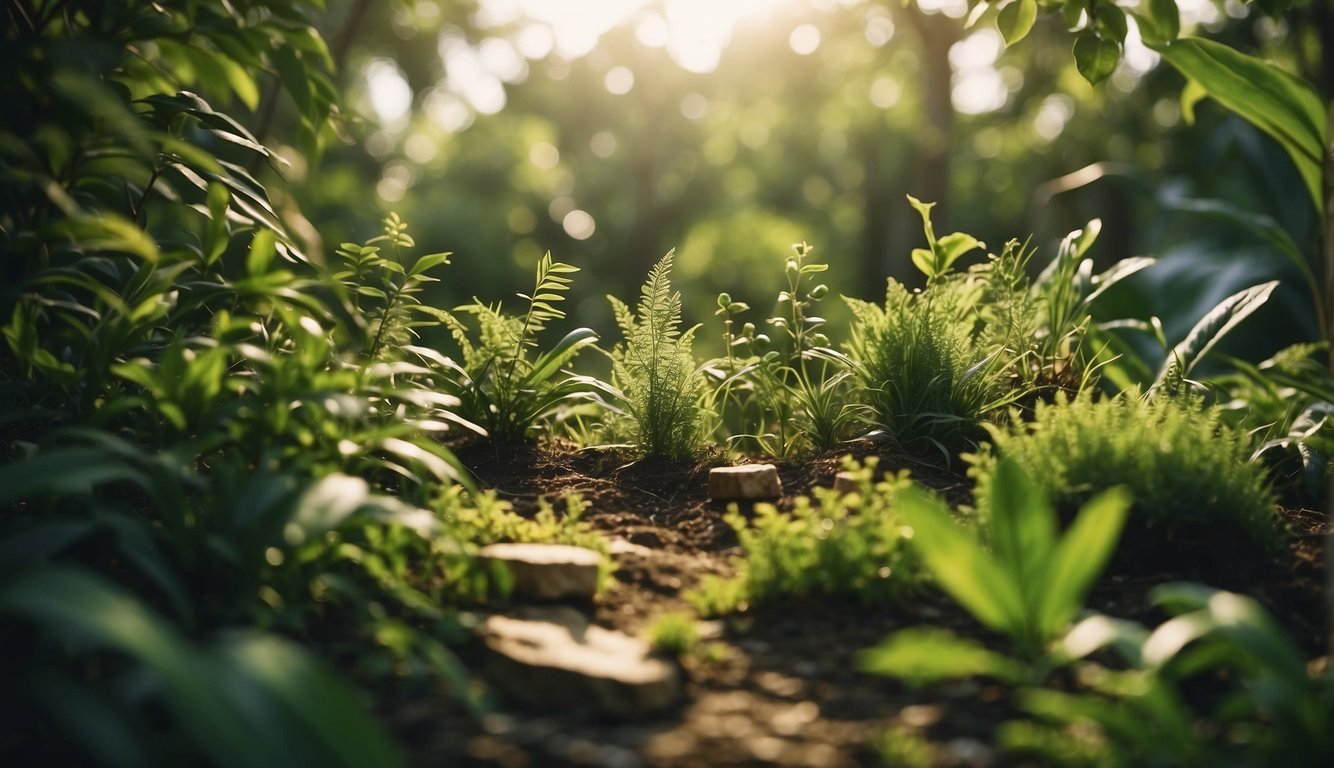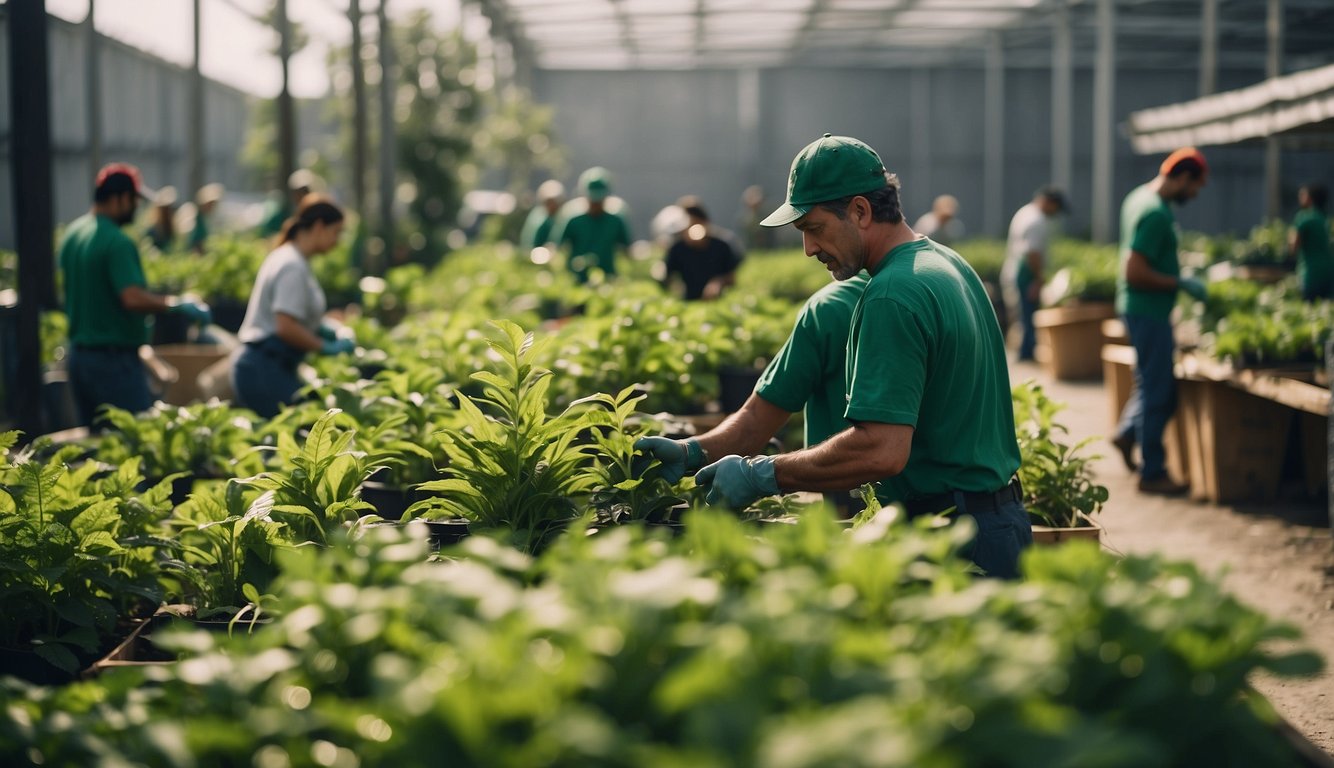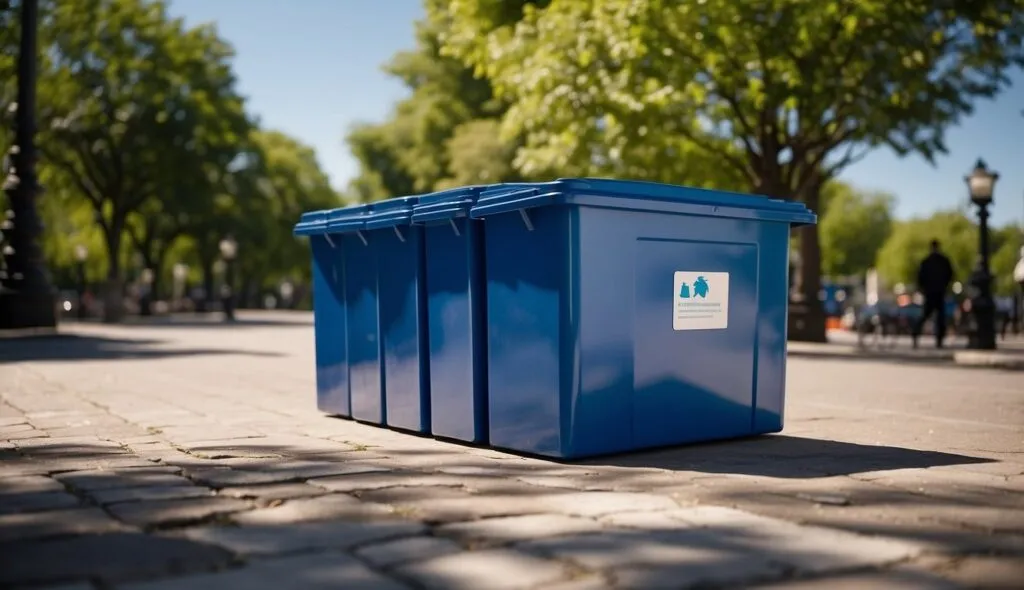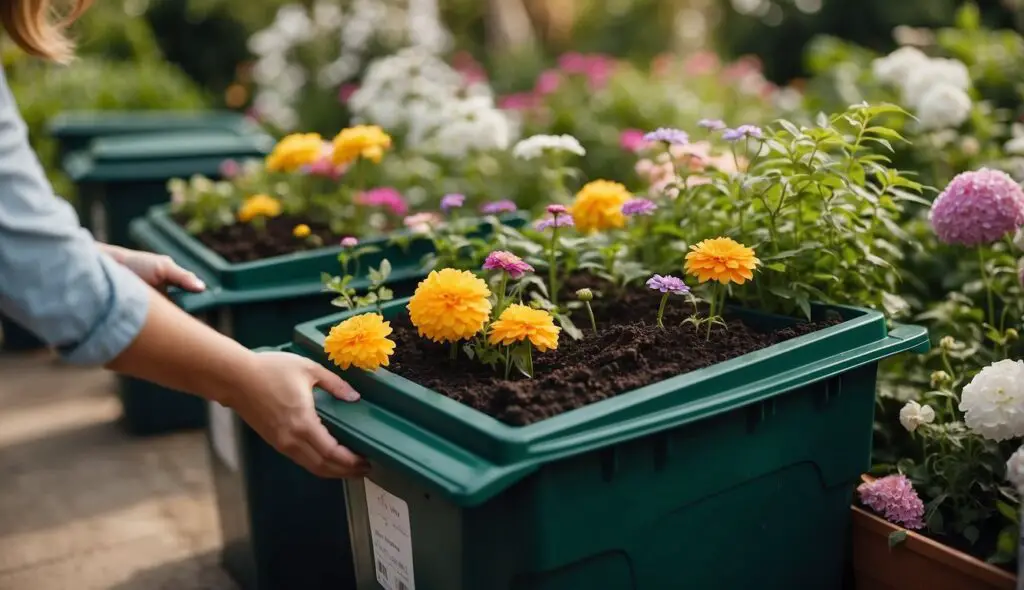Green area upcycling is a practice that involves turning waste materials into something useful and beautiful for your outdoor space. This environmentally friendly approach to gardening is becoming increasingly popular as people look for ways to reduce their carbon footprint and create a sustainable lifestyle. Whether you’re a seasoned gardener or just starting out, there are many ways to incorporate upcycling into your outdoor space.

The essence of upcycling is to take something that would otherwise be discarded and transform it into something new and useful. This can include anything from repurposing old furniture to creating planters out of recycled materials. The possibilities are endless, and the only limit is your imagination. By upcycling, you not only reduce waste but also give new life to materials that would otherwise end up in a landfill.
Table of Contents
Key Takeaways
- Green area upcycling is an environmentally friendly approach to gardening that involves turning waste materials into something useful and beautiful for your outdoor space.
- The essence of upcycling is to take something that would otherwise be discarded and transform it into something new and useful.
- By upcycling, you not only reduce waste but also give new life to materials that would otherwise end up in a landfill.
The Essence of Upcycling
At its core, upcycling is about taking something old and transforming it into something new and valuable. We believe that upcycling is more than just a trend or a buzzword; it’s a creative and functional way to repurpose items that would otherwise go to waste.
Upcycling is all about potential. It’s about seeing the beauty and potential in items that others might overlook or discard. By giving new life to old items, we can reduce waste and create something that is both unique and functional.
Upcycling is not just about reuse; it’s also about repurposing. By repurposing items, we can create something that serves a new function and has a new purpose. This can be anything from turning an old ladder into a trendy bookshelf to transforming jars into stylish storage containers for your kitchen, bathroom, or office.
Upcycling is not just about function; it’s also about art and design. Upcycling can be a way to express your creativity and create something that is truly one-of-a-kind. Whether you’re creating a conversation piece that’s both practical and stylish or breathing new life into an old piece of furniture, upcycling is a way to express your artistic side and create something that is truly unique.
In conclusion, upcycling is a versatile and sustainable way to transform old items into something new and valuable. It’s about seeing the potential in items that might otherwise go to waste and creating something that is both functional and beautiful. We believe that upcycling is more than just a trend; it’s a way of life that can help us reduce waste and create a more sustainable future.
Environmental Impact and Benefits

At Green Area Upcycling, we are committed to reducing the environmental impact of waste by repurposing and reimagining discarded materials. Upcycling has several environmental benefits that make it a sustainable alternative to recycling.
One of the primary benefits of upcycling is that it reduces waste and lessens the burden on landfills. By creatively utilizing existing materials, we conserve resources and minimize the demand for new production. This can lead to a decrease in energy consumption and emissions, which helps to reduce the carbon footprint of our operations.
Moreover, upcycling reduces the need for new resources to create similar products. This helps to conserve natural resources and minimize the environmental impact of our operations. By repurposing materials that would otherwise end up in a landfill, we are able to reduce the amount of waste that is generated and help to create a more sustainable future.
In addition to the environmental benefits, upcycling also presents cost-saving opportunities for individuals and businesses. By creatively utilizing existing materials, we are able to reduce the cost of production and offer products at a more affordable price. This makes upcycling a viable alternative to traditional manufacturing, which can be more expensive and resource-intensive.
Overall, upcycling has a positive impact on the environment and offers a sustainable alternative to recycling. By reducing waste, conserving resources, and minimizing the environmental impact of our operations, we are able to create a more sustainable future for us all.
Practical Upcycling Projects
When it comes to upcycling, the possibilities are endless. We can transform old and unused items into something new and useful. In this section, we will cover some practical upcycling projects that can be done with minimal effort and cost. We have divided them into three categories: Furniture Transformation, Creative Decor and Art, and Garden and Outdoor Ideas.
Furniture Transformation
Old furniture can be given a new lease of life with some creativity and a few tools. We can use a saw, drill, and paint to repurpose an old table, chair, or shelf. By adding some storage space, we can make them more functional and practical. We can also add some charm and history to them by using old picture frames or mirrors as decorations.
Creative Decor and Art
Upcycling can also be used to create unique and creative decor and art pieces. We can make wind chimes out of old utensils, or use old bottles to create a charming centerpiece. By using some paint and design skills, we can turn old jars into beautiful vases or candle holders. The possibilities are endless, and the results can be stunning.
Garden and Outdoor Ideas
Upcycling can also be used to create beautiful and functional garden and outdoor spaces. We can create garden planters out of old tires or pallets, or use old chairs or benches as trellises for climbing plants. By using some creativity and repurposing skills, we can turn old items into new and useful garden features.
In conclusion, upcycling is a great way to repurpose old and unused items and give them a new lease of life. By using some crafty skills and a few tools, we can create something new and useful out of something old and unused. The possibilities are endless, and the results can be stunning.
Choosing the Right Materials
When it comes to upcycling, choosing the right materials is crucial. Not only does it help in creating a beautiful and functional piece, but it also ensures that we are making the most of the resources available to us.
We can start by looking for items we already have at home that are no longer in use, such as old clothes, furniture, glass jars, plastic bottles, and cardboard boxes. These items can be transformed into unique and functional pieces with a little creativity and some basic tools.
In addition to items we already have, we can also find materials at thrift stores, flea markets, and garage sales. These places offer a treasure trove of items that can be upcycled into something new and beautiful. We can find wood, metal, and glass jars at these places that can be transformed into stunning pieces of art.
It is important to note that we should always prioritize natural resources when choosing materials for upcycling. We should avoid using materials that are harmful to the environment, such as plastic. Instead, we should focus on using materials that are biodegradable and can be easily recycled.
By choosing the right materials and tools, we can begin our upcycling journey with confidence. We can create beautiful and functional pieces while also making the most of the resources available to us.
Upcycling for Your Lifestyle
Upcycling is a great way to add a personal touch to your fashion and living spaces while staying within your budget. By repurposing items from thrift stores, garage sales, and within your community, you can create unique and quirky pieces that reflect your personal style.
Fashion and Personal Style
Upcycling clothes is a great way to add new pieces to your wardrobe without breaking the bank. By repurposing old clothing items, you can create one-of-a-kind pieces that reflect your personal style. For example, by adding patches or embroidery to a denim jacket, you can create a unique piece that no one else will have.
Home and Living Spaces
Upcycling household items is a great way to add character to your living spaces. By repurposing old furniture and decor, you can create a personalized and quirky atmosphere. For example, by painting an old dresser and adding new knobs, you can create a unique piece that adds character to your bedroom.
Upcycling kitchen items is also a great way to add a personal touch to your living space. By repurposing old jars and containers, you can create stylish and functional storage solutions. For example, by painting old mason jars and using them to store kitchen utensils, you can create a unique and functional piece for your kitchen.
Overall, upcycling is a great way to add a personal touch to your fashion and living spaces while staying within your budget. By repurposing items from thrift stores, garage sales, and within your community, you can create unique and quirky pieces that reflect your personal style.
Conclusion

In conclusion, we firmly believe that upcycling green areas can be a successful project if done with resourceful management and the help of experts in the field. It requires patience and a willingness to experiment with new upcycling ideas.
Throughout this article, we have explored the benefits of upcycling green areas, including reducing waste, promoting sustainability, and creating new opportunities for community engagement. We have also discussed the importance of considering the environmental impact of upcycling projects and ensuring they align with local regulations.
When it comes to upcycling green areas, creativity is key. There are countless ways to repurpose materials and transform unused spaces into vibrant community hubs. From repurposing old tires as planters to creating seating areas from reclaimed wood pallets, the possibilities are endless.
However, it is important to keep in mind that upcycling is not a one-size-fits-all solution. Each project requires careful consideration of the materials involved, the intended use of the space, and the needs of the community. With the right approach, upcycling green areas can be a powerful tool for promoting sustainability and community engagement.
Frequently Asked Questions

How does upcycling contribute to a circular economy?
Upcycling is a crucial component of a circular economy. It involves taking waste materials and transforming them into new products, extending their life cycle and reducing the amount of waste that ends up in landfills. By upcycling, we can reduce the amount of virgin materials that are used to create new products, which reduces the environmental impact of manufacturing processes. In addition, upcycling can create new jobs and opportunities for local communities.
What are the environmental benefits of upcycling materials?
Upcycling has many environmental benefits. By reusing materials that would otherwise be discarded, we can reduce the amount of waste that ends up in landfills. This reduces the environmental impact of waste disposal and conserves natural resources. In addition, upcycling can reduce the amount of energy and resources required to create new products from scratch, which reduces greenhouse gas emissions and other forms of pollution.
Can you provide examples of successful upcycled products?
Yes! There are many successful upcycled products on the market today. Some examples include furniture made from reclaimed wood, bags made from recycled plastic bottles, and jewelry made from old computer parts. These products are not only environmentally friendly, but they are also stylish and unique.
What are some common challenges faced in upcycling projects?
One of the biggest challenges in upcycling projects is finding the right materials. Upcycling requires creativity and resourcefulness, as well as the ability to see potential in materials that others might overlook. In addition, upcycling can be time-consuming and labor-intensive, which can make it difficult to scale up production. Finally, upcycling requires specialized skills and knowledge, which can be a barrier to entry for some people.
How does upcycling in green areas differ from traditional recycling?
Upcycling in green areas involves taking waste materials from natural environments and transforming them into new products. This approach is different from traditional recycling, which typically involves processing materials in a centralized facility. Upcycling in green areas can be more labor-intensive and requires specialized knowledge of local ecosystems and materials.
What qualifications are necessary to become an upcycling specialist?
There are no formal qualifications required to become an upcycling specialist. However, upcycling requires a combination of creativity, resourcefulness, and technical skills. Some upcycling specialists have backgrounds in design, engineering, or other technical fields, while others have developed their skills through hands-on experience. Ultimately, the most important qualification for an upcycling specialist is a passion for sustainability and a willingness to learn and experiment.


